Grainne O’Malley, the Sea Queen of Connacht
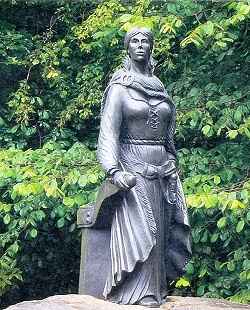
It’s one of those odd ironies of history that we know far more about Grainne O’Malley, the notorious Irish pirate, from her enemies than we do from the countrymen she fought to support. On the one hand, this is because she made a definite impression on the English – few Irish chiefs ever travelled to London to meet the monarch. On the other, it may have been prejudice on the part of the Irish – women did not normally go to war at this time, after all. The primary source we have for the history of the period is the Annals of the Four Masters, and one could make a case that monks would be less likely to want to record a woman so careless of convention. But one also has to remember that they were writing after the Nine Years War had been lost – after English rule had been firmly imposed on the once more unruly Irish. To those people, Grainne was a reminder of a more free time, a potent symbol of refusal to submit that it may have been more politic to censor from the record. Besides, there was no need to write down the tales of her prowess. The people were already telling them.
Grainne was born around 1530 with the Irish name of Gráinne Ní Mháille, meaning Grainne of the O’Malley clan. [1] Her father was Owen O’Malley, chief of the O’Malley clan. He controlled the seas off Connaught, and collected a tax from the fishermen that worked the coast. He also had a large fleet of his own, which he used for a combination of trading and piracy. Most of his trading was with Scotland, though he did occasionally venture as far as Spain. It was in relation to one of these Spanish trips that the first legend around Grainne’s life takes place. At the time she was a young girl with a long head of noticeably beautiful hair, and so when she asked to go along on the trip her father made the excuse that she could not, because her hair would get caught in the ropes. Not to be deterred, Grainne cut off all of her hair, and so her father was shamed into taking her along. From this she gained the nickname “Gráinne Mhaol”, or “Bald Grainne”, usually Anglicized as “Granuaile”. It’s a nice story, though there is no evidence for it. She did definitely gain the nickname in legend, though whether it came from the story or the story came from it is unknown.
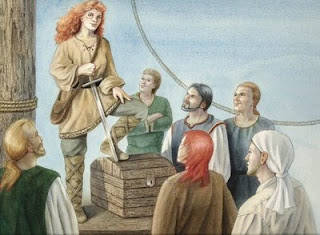
At the age of 16 she was married to Donal O’Flaherty, heir to the chieftainship of the O’Flaherty clan. The O’Flaherties ruled western Connacht, so it was an advantageous match politically. It seems to have been a good match personally as well, as Donal allowed Grainne to sail with the O’Flaherty fleet and in time she became first a captain and then the commander of the fleet, a testament to the talent she must have shown. She was credited with assisting in some of Donal’s notable victories, including conquering the Joyce clan and bringing them under O’Flaherty control. This may have rubbed some of her new clan the wrong way, however, as when Donal died in 1565 she was denied the traditional widow’s portion of his estate. (Quite what role her two sons, who were the other heirs to Donal’s estate, played in this is disputed – some claim they were the prime movers, while others say they were being used by the rest of the clan.) Her case was not helped by the complaints the clan had received from the English authorities that Grainne had been using their fleet to raid the English ships coming out of Galway. Snubbed by the O’Flaherties, Grainne left. With her left a sizeable portion of the O’Flaherty fleet, who had decided that their loyalty to her was greater than to that of the clan leaders. She set up base on Clare Island, which allowed her control of Clew Bay and a commanding central position over the whole of the west coast of Ireland. For the rest of her life, this would be her home.
The following year Grainne remarried, this time to “Iron” Richard Bourke, an Anglo-Irish “Old Norman” duke. His lands included many coastal castles and secluded coves, perfect for sheltering the members of her fleet. The two had one son, Tibbot, who was nicknamed “Tibbot of the Ships” because he was born on board a ship during a voyage to the Mediterranean. The story was that the day after he was born the ship was attacked by Turkish corsairs, and Grainne rose from her bed to fight in defence of the ship. The captured Turkish vessels became an exotic addition to the fleet of the pirate queen. It was a tradition that the first year of marriage, either party could choose to dissolve it. One story has it that Grainne did chose to do so – while in control of Rockfleet Castle, the greatest of Richard’s fortresses. Other stories have it that he persuaded her to relent, and most agree that the two remained married until his death in 1583. He had become clan chieftain only two years earlier, and stories have it that rather than wait for the official disposition of his estate Grainne, unwilling to be cheated again, simply took a thousand head of cattle and her followers, and headed back to Clare Island.
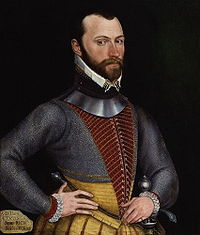
It was a bad couple of years for Grainne, as in 1584 Queen Elizabeth appointed Richard Bingham as the governor of Connacht. Bingham had been involved in the suppression of the Second Desmond Rebellion in the south of Ireland a few years before, and had been one of the commanders involved in the massacre of six hundred Irish, Spanish and Italian prisoners at Ard na Caithne in Kerry after they had surrendered under guarantee of their lives. Since then he had been involved in suppressing pirates in the English Channel. His appointment made it clear that the heavier hand of English rule that the Tudors had been placing on Ireland was about to fall on Connacht. In 1585 he called the Composition of Connacht, a great assembly where the taxes owed by the Irish lords to the English crown were revised and standardised. By the following year seventy people had been sentenced to death for disloyalty, and Connacht had fallen into disorganised rebellion – which was perhaps what Bingham had wanted all along. As a result he was able to move directly against the Irish lords, dispossessing them and installing English nobles (including his brother John) in their place.
Naturally, this brought him into conflict with Grainne. She had officially submitted to English rule in 1577, when she and Iron Richard had needed to shore up his position to inherit the Burke leadership. Now those selfsame Burkes were being put to the sword by the English, and Grainne herself had to contend with pirate hunters going after her ships. The exact chronology of events is hard to follow, but it appears that her eldest son Owen O’Flaherty was allegedly taken prisoner by Bingham’s troops and executed, though he had never actually rebelled against the crown. At some point in the early 1590s Grainne herself was arrested and imprisoned in Galway. Her daughter Margaret had also married into the Bourkes, and Margaret’s husband Richard Bourke (known as “the Devil’s Hook”) was clearly senior enough in that clan that he was able to negotiate Grainne’s release on the condition he surrender himself. Once freed, Grainne decided there was only one option available to her. To appeal to the Queen herself, in person.
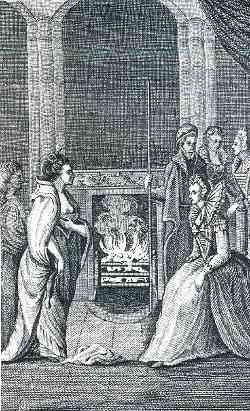
Crossing the ocean to get to London would have been child’s play for Grainne, of course, though evading the patrols that would doubtless have tried to block her might have been more difficult. Still, she managed it, and in July 1593 she arrived in the capital and sent her request for an audience to the court. Trying to understand this strange creature that had fetched up on their shore, the authorities sent her an 18-part questionnaire, possibly hoping that she would prove to be incapable of filling it out. However the solid merchant’s education she had received stood her in good stead, and her comprehensive answers to the questions, as recorded in the court annals, is our primary source of information about her life. Clearly impressed and perhaps a little curious, Queen Elizabeth granted Grainne the audience she sought.
Quite what the two talked about has not been recorded. Both were women leading patriarchal societies after all, and so some common ground would have been easy to find. They spoke Latin to each other, as though Grainne spoke at least half a dozen languages apparently English was not among them. In one noted incident, Grainne sneezed and a lady in waiting gave her an expensive silk handkerchief to wipe her nose. Once she had done so she threw the handkerchief into the fire, claiming that this was the Irish custom due it now being dirty. Whether this was true, or whether she was tweaking their noses, is not recorded. What is recorded is the results of the meeting – Grainne agreed to be a loyal subject, while Elizabeth agreed to have Bingham removed and Grainne’s son-in-law released, and to have Grainne’s confiscated cattle and lands returned. On those terms, the two women parted.
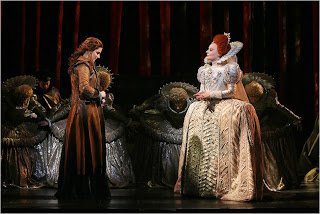
Grainne returned to Clare Island, and at first it seemed that Elizabeth would be true to her word. Richard was released, while Bingham was recalled to Dublin. However it soon became clear that the confiscated property would not be returned, and by the following year Bingham was back in office. As a result Grainne retreated back to Clare Island, and when the Nine Year’s War broke out in 1594 she lent her support to Hugh O’Neill and Red Hugh O’Donnell’s rebels. She died around the same time as that war ended in 1603, though the exact date of her death, and even where she is buried, remains uncertain.
Though Grainne was snubbed by the annalists of her day, her visit to Elizabeth’s court ensured that she occupied a place in English national consciousness. The pirate queen Grace O’Malley became a fixture in tales and stories. In her native Connacht too she was not forgotten, and as the Celtic culture was driven underground songs about Granuaile the Sea Queen soon came to symbolise the spirit of independence they hoped to keep alive. In the play The Rising of The Moon by Lady Gregory [2] a rebel on the run, known as the Ragged Man, persuades a policeman to let him go by reawakening his inner patriotism through a shared memory of Granuaile’s legend. Hundreds of years after her death, the spirit of Gráinne Ní Mháille continues to inspire, with dozens of songs and plays featuring her released in recent years. It seems that even death can’t keep the Pirate Queen of Connemara down.
Images via wikimedia except where stated. If anyone is aware of the artist who created the drawing of Grainne and her crew, please let us know.
[1] For ease of writing and reading I’ll be using mostly Anglicized versions of Irish names throughout, where they exist, though I do draw the line at the common English tradition of calling Grainne “Grace”.
[2] One of the architects of the Celtic Revival, the 19th century effort to re-establish an Irish culture.
